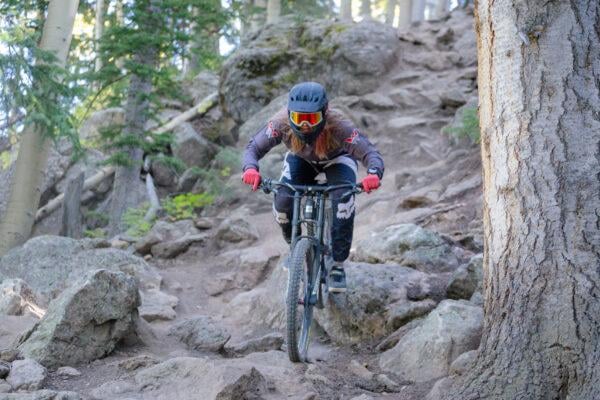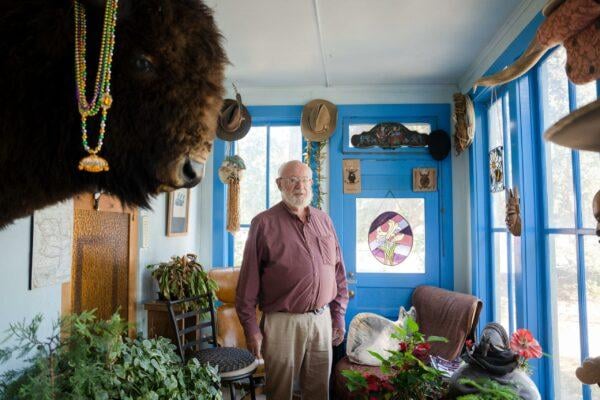It is a beautiful and functional wetland ecosystem
The landscape of so many mountain tourism hubs is covered up by condos or manicured to the point of being unrecognizable as a habitat. But in the Gunnison Valley, open space has always been a defining feature, and it isn’t by chance. It takes visionary people partnering with proactive organizations to keep open space open.
Wynn and Ryan Martens are just those kinds of people, and thanks to their donation of the 40-acre Verzuh Ranch to the WCU Foundation, an important riparian and wetland landscape bordering Crested Butte will be stewarded with the goal of protecting and enhancing the biodiversity that relies on the habitat.
“[The] Martens have a conservation and regenerative vision of land management in the Gunnison Basin, and we share that vision and are deeply appreciative of their generous donation of [Verzuh Ranch] in Crested Butte,” Professor of Wildlife & Conservation Biology, Pat Magee!, said. “With the Slate River marking one boundary of the property and Mount Crested Butte towering above, it is a beautiful and functional wetland ecosystem.”
With Western taking ownership this month, Verzuh Ranch will now become an outdoor classroom and learning laboratory where faculty and students can conduct research and study the interactions between wildlife and its habitat. Already, students have been on the land conducting an annual bird survey, which has documented more than 90 bird species using the property during nesting and migration seasons.

Researchers see birds as excellent indicators of ecosystem conditions because they are responsive to environmental change, have important ecological functions – such as seed dispersal and insect consumption – and are easy to observe.
Along with birds, it is estimated that more than 80 percent of wildlife native to Colorado use or are dependent on wetland habitats for at least a part of their life cycle. Yet only 2 percent of the land in the state is riparian, and about half of that has been impacted or eliminated due to development, making the donation of Verzuh Ranch for educational purposes even more impactful.
“We’ve had a great partnership with Western during the past five years, as their research has guided our stewardship decisions for the property and taught us about the critical role these wetland habitats play in the survival of wildlife,” Wynn said. “We are excited that, as the new owners of Verzuh Ranch, Western will be able to expand that research and develop new educational opportunities.”
According to Magee!, the University will focus on learning from the land by developing research projects and applying an adaptive management approach where the science generated from research folds back into conservation planning and implementation. Students and faculty will document biodiversity on the ranch, inventory existing conditions, and test the effectiveness of restoration and conservation methods, among other research studies.
They will also develop a management plan for the property and collaborate with neighbors and interested stakeholders, including Bill Parker, who uses regenerative livestock grazing to improve soil and vegetation health, to build a Lower Slate River conservation culture.
“Upon careful consideration and ensuring our prime goals of conserving biodiversity and restoring habitats, if deemed appropriate, we will develop environmental education and outreach efforts and engage local schools and other audiences,” Magee! said. “Certainly, the restoration progress and efforts will provide a demonstration area where students and professionals can learn about conservation and restoration practices.”
Responsibility for the land will fall to the Wildlife Biology emphasis in Western’s Department of Natural and Environmental Sciences and the Clark School of the Environment and Sustainability, namely the Ecological Restoration Program, to manage the land.
Anyone from the university will be welcome to participate in the efforts, allowing more than just students enrolled in those specific programs the chance to get to know the land and what it takes to be good stewards.

“Western has the opportunity to take a leadership role in this process and contribute expertise, hours of on-the-ground restoration with an army of students, graduate and undergraduate student projects, education and outreach programs, and seek an appropriate balance for public access and recreation, without impacting the natural values of the landscape,” Magee! said. “This land will give Western students and faculty opportunities for education, research, habitat management and improvement projects, and conservation planning. We also hope to invite the local community to learn on this land and deepen or even reimagine the relationship between humans and the natural world.”
This summer, Western Colorado University will host a community ribbon-cutting event to celebrate this transformative gift.
Author Credit: Seth Mensing
Photo Credit: Courtesy




